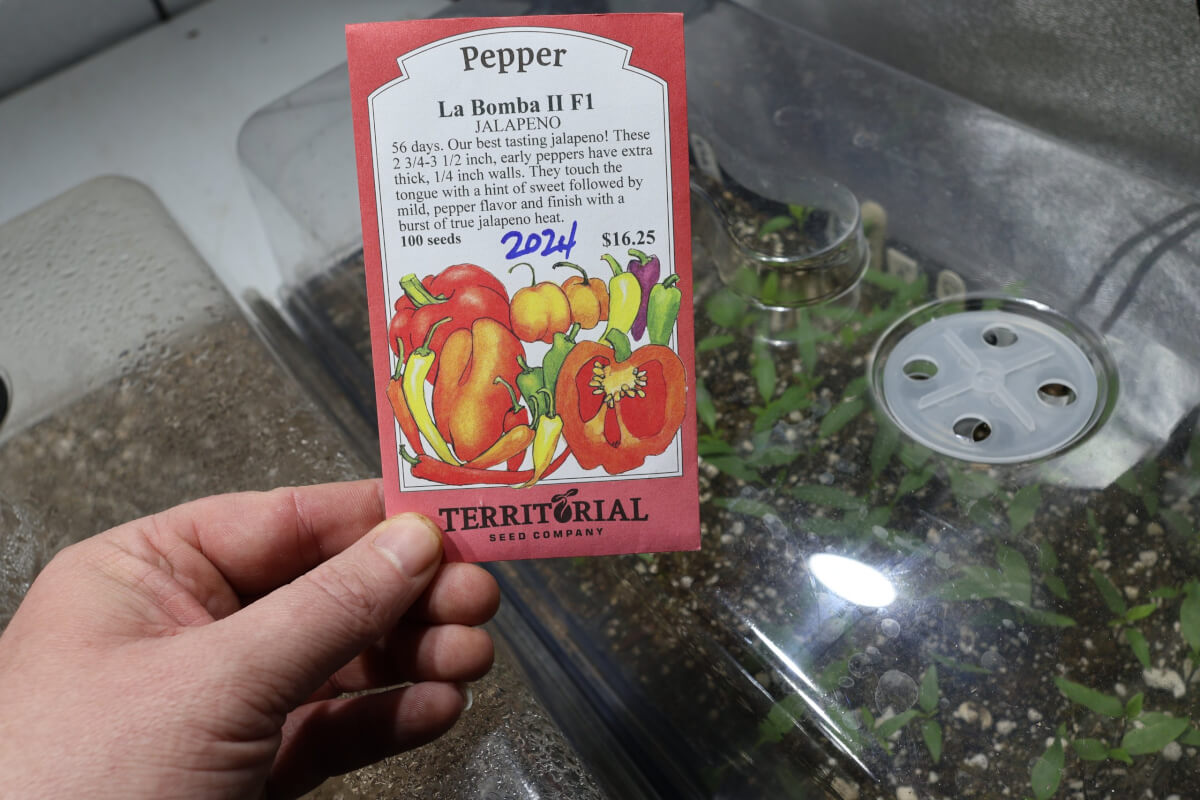If you’ve been paying attention to the subtle details, you might have picked up on the fact that we use a lot of F1 genetics. This is usually denoted on our seed packets along with the “type” of seed that it is. You might have been curious, or are maybe you’re just now curious, about what that actually means!
The “F” in F1 stands for “filial,” or essentially offspring. A better way to think of F1 (if you’re not a biologist) is “first children.” We’re essentially talking about plant hybridization, or the cross breeding of two different types of the same plant. When this is done, those “first children” seeds take on unique characteristics and also diverge from both of their parent’s genetics. You could say they are similar, but not alike to their parents. In many cases, this gives us beneficial growing characteristics such as more vigor, bigger fruit, early maturity and so on. This can be functionally repeated by cross breeding the same two (different) varieties over and over again.
The antithesis to this concept is “heirloom.” This is probably something you’ve heard of, might even “fiercely defend” and I’d also bet a lot of you have no idea why. Essentially, the difference (from F1) is that these heirloom varieties remain “pure” in their genetics. The breeding occurs between identical genetics and therefore the resulting “first children” are identical to those of its parent plants. This is functionally how we’ve had some of the same breeds of plants for hundreds of years. And it is really important to keep them going, at least if we value those genetics!
Despite the fervent and sometimes loud preferences around heirloom varieties, these two genetic breeding methodologies are not exactly at odds with one another. (And for further clarity, neither process is GMO…which most sensible growers universally disagree with!) Both F1’s and heirloom varieties benefit the growing world and the gardeners that use them. To us, it makes little sense to be “purely” heirloom, especially if we can get some great growing characteristics and quality produce from F1 varieties. That’s not to say that we can’t also know and love our heirloom varieties, too. We can literally do both and we don’t have to get up in anyone’s business about what the “right” way is. If you think long and hard about it, even those “heirloom” varieties were once also F1’s at some point.
What we’ve generally found in northern growing is that those unique F1 characteristics can often give us a growing advantage. That’s not “always” the case, of course, as there’s rarely absolutes. But, that is why you see us growing them and why you don’t hear us blaring the “heirloom only” horn on full blast. For example with our jalapenos, we can get earlier production, heavier fruit, more produce weight and tastier peppers compared to a pure, heirloom jalapeno variety that was established 200 years ago. All day long, every time.
Hopefully this gave you something to chew on, in case you’ve ever wondered what these things meant!


